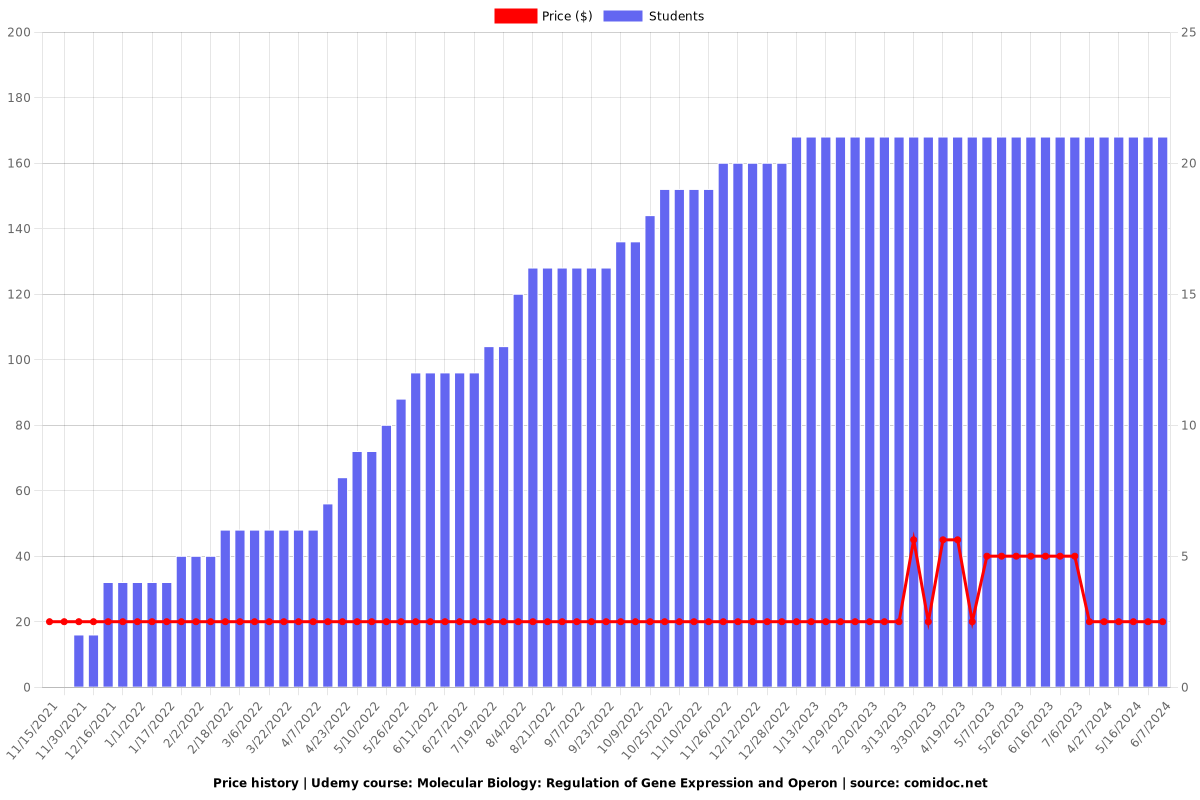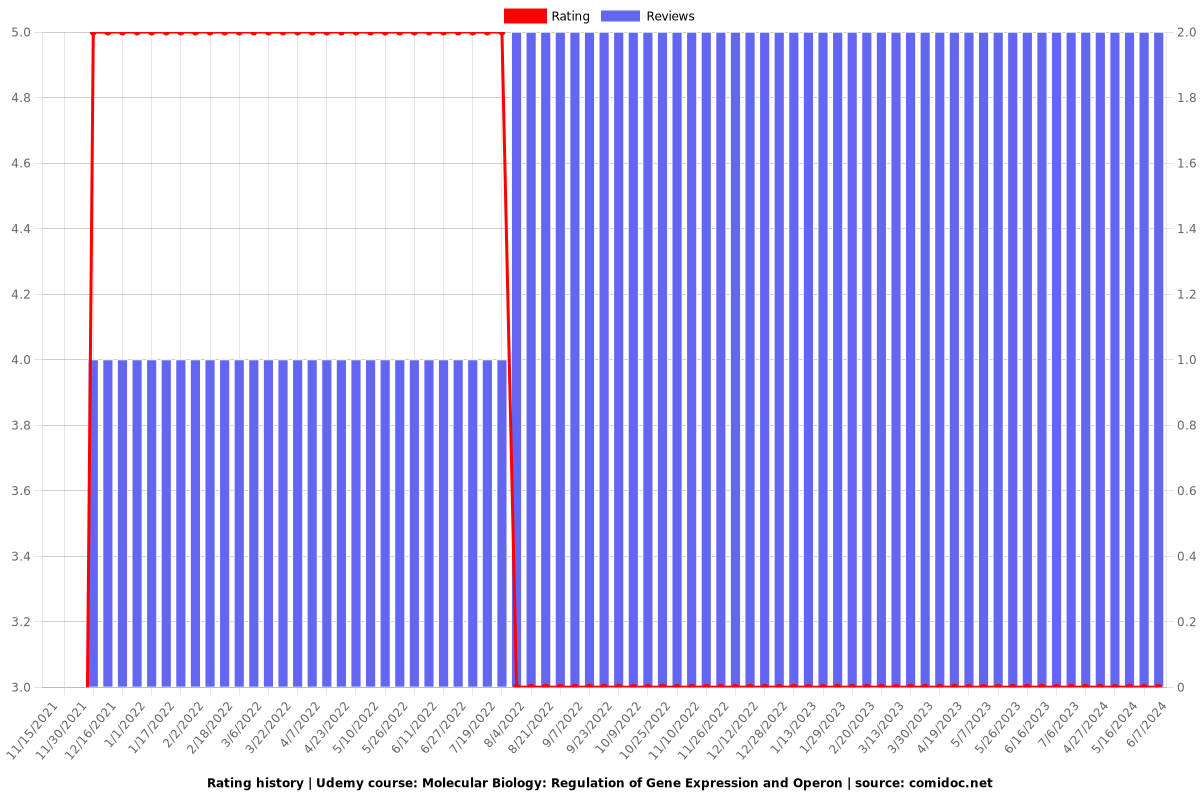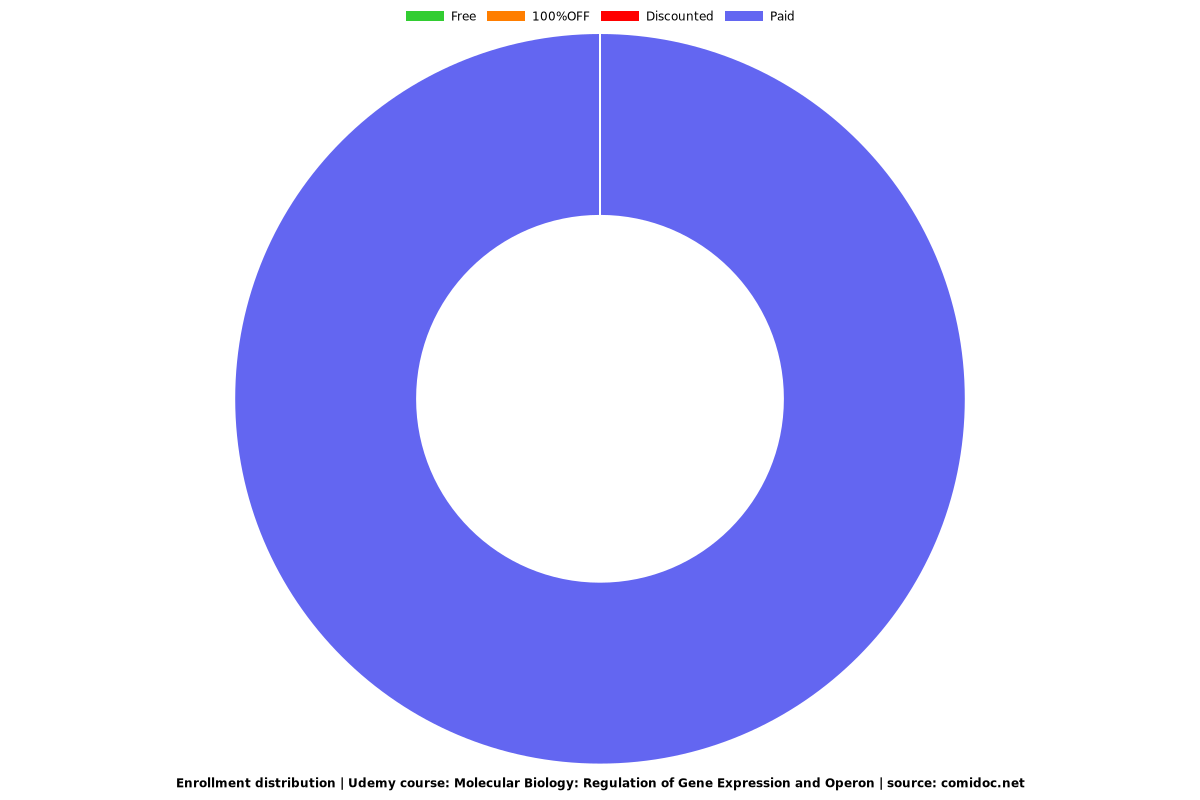Molecular Biology: Regulation of Gene Expression and Operon
Learn about regulation of gene expression and role of operons in it.

What you will learn
Learn about gene regulation
What is gene regulation?
Advantages of gene regulation
List positive and negative regulations
Highlight elements affecting gene regulation
Learn what is operon?
Identify the components of an operon
Differentiate between gene and operon
Learn about types of operons
Define lac operon
List the components of lac operon
Mechanism of gene regulation by lac operon
Applications in molecular biology
Learn about trp operon
List the components of trp operon
Mechanism of gene regulation by trp operon through repressors
Mechanism of gene regulation by trp operon through attenuation
Why take this course?
Of the 4,000 or so genes in the typical bacterial genome or the perhaps 29,000 genes in the human genome. Only a fraction oare expressed in a cell at any given time. Some gene products are present in very large amounts, while other gene products occur in much smaller amounts. Given the high cost of protein synthesis, regulation of gene expression is essential to making optimal use of available energy.
Some genes products are required at all times. For other gene products, cellular levels rise and fall in response to molecular signals. this increase and decrease expression of a gene is called regulation of gene expression or gene regulation. It is the process of turning gene on and off. Gene products that decrease in concentration in response to a molecular signal are referred to as repressible, while that increase in concentration under particular molecular circumstances are referred to as inducible. Gene regualtion is affected by number of factors, including promoter, regulatory proteins and operon.
An operon is a functioning unit of DNA containing a cluster of structural genes under the control of a single promoter. Genes are transcribed together into an mRNA strand and either translated together in the cytoplasm, or undergo splicing to create monocistronic mRNAs that are translated separately. Promoter, operator and structural genes are main components of an operon. There are two types of operons i.e., inducible (e.g., lac operon) and repressible (e.g., trp operon).
lac operon is required for the transport and metabolism of lactose in E. coli and many other enteric bacteria. The main components of lac operon are promoter, operator and three strcutural genes i.e., lacZ, lacY and lacA. Its expression is regulated by lacI repressor and cAMP-bound catabolite activator protein (CAP) induced by presence or absence of lactose. lac genes are used as a reporter gene in a number of bacterial-based selection techniques such as two hybrid analysis and blue-white screening.
trp operon contains a group of genes that codes for the components for production of tryptophan amino acid. The main components of trp operon are promoter, operator, leader, attenuator and five strcutural genes i.e., trpE, trpD, trpC, trpB and trpA. trp operon is regulated by two methods i.e. by repressor protein and attenuation mechanism.
This course is a valuable resource for students and researchers related to molecular biology, forensic science, biotechnology, and genetics.
Start your learning journey now and explore the hidden truth about nature!
Charts
Price

Rating

Enrollment distribution
